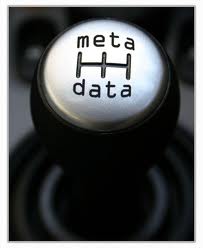E-Discovery Examined In Depth
By admin on July 17, 2012
 On July 16-17, 2012, Executive Counsel Institute conducted a cutting edge meeting in New York titled, “E-Discovery for the Corporate Market.” The theme of the two day meeting was “Controlling Your E-Discovery Destiny.” The Colloquium Moderators, Brown E. Marean III from DLA Piper, David Kessler from Fulbright & Jaworski, and Paul Weiner from Littler Mendleson did an excellent job of keeping all of the participants actively engaged.
On July 16-17, 2012, Executive Counsel Institute conducted a cutting edge meeting in New York titled, “E-Discovery for the Corporate Market.” The theme of the two day meeting was “Controlling Your E-Discovery Destiny.” The Colloquium Moderators, Brown E. Marean III from DLA Piper, David Kessler from Fulbright & Jaworski, and Paul Weiner from Littler Mendleson did an excellent job of keeping all of the participants actively engaged.
The panelists included: Steven C. Bennet, a partner at Jones Day; Richard Cohen, President of RenewData in Austin, Texas; Eric T. Crespolini, Vice President of eDiscovery Technologies; Andrea L. D’Ambra, Counsel at Drinker Biddle & Reath LLP; Eugene “Gene” Eames, Director of Search and Data Analytics at Pfizer; Lynn Frances, Principal at E-Discovery Writer; Bill Gallivan, CEO of Digital WarRoom in Seattle; Daniel P. Kulakofsky, Managing Counsel and Director of Electronic Discovery at The Travelers Companies; Jason Lichter, Senior Counsel of eDiscovery and Information Governance at Seyfarth Shaw; Stephen J. Lief, Practice Support Counsel at Epstein Becker & Green and all-round high tech guru; Mary Mack, Enterprise Technology Counsel at ZyLAB; Maryrose E. Maness, Senior Vice President and Chief Employment and Corporate Infrastructure Counsel at Warner Music Group; Lynn Mestel, President of Hire Counsel in New York City; Tom O’Connor, Director Gulf Coast Legal Technology Center in New Orleans; Andrew J. Peck, United States magistrate judge in the U.S. District Court for the Southern District of New York; Farrah Pepper, Executive Counsel of Discovery at General Electric; Mary Pat Poteet, Senior Consultant at Project Leadership Associates in Chicago; John A. Schwab at Gordon Alfano Bosick & Raspanti; Debra C. Swartz, Chief Compliance Officer for AmerisourceBergen Corporation in Philadelphia; John Thacher, Director of Managed Review Services at TechLaw Solutions in New York City; Brian T. Wolfinger, Vice President of Technology at LDiscovery in Philadelphia; and the eponymous Laura A. Zubulake, author and speaker on Information Governance.
I attended the meeting because, as a trial lawyer, I was troubled that I did not even know what I didn’t know about e-discovery. Having attended the meeting, I can report that I now know what I don’t know and there is a lot I now know I don’t know. What I did learn, however, is that there remains a great deal of uncertainty throughout the e-discovery realm, and that technological advances are emerging almost constantly. I was somewhat comforted that even some of the technological gurus at the meeting, who are partners at major law firms, often have difficulty “selling” technologically advanced e-discovery solutions to their more conservative trial partners.
Judge Peck discussed whether manual document review and keyword searches will be replaced by computer-assisted coding, sometimes referred to as “predictive coding.” In an important recent opinion, discussed in an earlier blog post, Judge Peck provided a judicial imprimatur for the use of predictive coding in federal district court litigation but it has by no means been adopted broadly. Predictive coding may offer a new template for conducting e-discovery just as computerized research using Lexis transformed the manner in which lawyers perform legal research in the mid-1970’s. Just as stodgy older lawyers then urged their associates to stay away from that "computer box" and perform their legal research manually–with books–the time-tested traditional way, their counterparts today are leery of embracing emerging new e-discovery technology.
There was much discussion concerning data security, social media and The Cloud. There was frank discussion concerning ethical and contractual tensions that can arise between in-house counsel, outside counsel and e-discovery vendors. Discussions centered on factual and legal scenarios that had been encountered by attendees and panel members. All of this made for a very worthwhile meeting.

 Connecticut state courts have not provided a rule to address electronic discovery that would give guidance to litigants in a manner similar to the federal rules. In a significant decision, issued on November 18, 2011, the Hon. Barbara Brazzel-Massaro, who sits in
Connecticut state courts have not provided a rule to address electronic discovery that would give guidance to litigants in a manner similar to the federal rules. In a significant decision, issued on November 18, 2011, the Hon. Barbara Brazzel-Massaro, who sits in  Duane Morris reported today concerning a decision in Race Tires America, Inc. v. Hoosier Racing Tire Corp., 2011 U.S. Dist. LEXIS 48847 (W.D. Pa. May 6, 2011). There, the U.S. District Court for the Western District of Pennsylvania held that the prevailing defendants at trial may recover a whopping $367,000 in e-discovery costs because such costs are the modern-day equivalent of duplication costs. Although the court took care to limit its ruling to the "unique" facts associated with this case, should litigants consider more narrowly tailoring their discovery requests and seeking early agreement on the scope of electronic productions? Following an affirmance of an award of summary judgment to defendants by the Third Circuit, the defendants sought to recover their costs—the vast majority of which were related to e-discovery. The plaintiff objected, contending that the costs were not taxable pursuant to 28 U.S.C. § 1920(4), which permits recovery of "[f]ees for exemplification and the costs of making copies of any materials where the copies are necessarily obtained for use in the case." The issue before the district court was the applicability of § 1920(4) to electronically stored information, an issue which has not yet been addressed by the Third Circuit. In its ruling, the district court first focused on the words "exemplification" and "copying." While recognizing that these terms "originated in and were developed in the world of paper," it viewed the steps a vendor takes to produce electronic data as the "electronic equivalents of exemplification and copying." Defendants were able to demonstrate that plaintiff aggressively pursued e-discovery under the case management plan, and the court found that the requirements and expertise necessary to retrieve and prepare documents for production were an indispensable part of the discovery process. Although the district court limited the holding to the facts presented by the case, it is likely that the expanded view of 1920(4) will be debated in other district courts around the United States in the months to come. Although many courts have attempted to allocate the costs of e-discovery fairly before a party undertakes this obligation, this cases suggests that courts may seek to revisit the allocation of e-discovery costs following entry of judgment. According to the decision, it is up to the party seeking to recover these costs to demonstrate that the costs at issue were incurred for the sole purpose of complying with an adversary’s demands rather than, for example, improving the appearance of documents for trial presentation purposes.
Duane Morris reported today concerning a decision in Race Tires America, Inc. v. Hoosier Racing Tire Corp., 2011 U.S. Dist. LEXIS 48847 (W.D. Pa. May 6, 2011). There, the U.S. District Court for the Western District of Pennsylvania held that the prevailing defendants at trial may recover a whopping $367,000 in e-discovery costs because such costs are the modern-day equivalent of duplication costs. Although the court took care to limit its ruling to the "unique" facts associated with this case, should litigants consider more narrowly tailoring their discovery requests and seeking early agreement on the scope of electronic productions? Following an affirmance of an award of summary judgment to defendants by the Third Circuit, the defendants sought to recover their costs—the vast majority of which were related to e-discovery. The plaintiff objected, contending that the costs were not taxable pursuant to 28 U.S.C. § 1920(4), which permits recovery of "[f]ees for exemplification and the costs of making copies of any materials where the copies are necessarily obtained for use in the case." The issue before the district court was the applicability of § 1920(4) to electronically stored information, an issue which has not yet been addressed by the Third Circuit. In its ruling, the district court first focused on the words "exemplification" and "copying." While recognizing that these terms "originated in and were developed in the world of paper," it viewed the steps a vendor takes to produce electronic data as the "electronic equivalents of exemplification and copying." Defendants were able to demonstrate that plaintiff aggressively pursued e-discovery under the case management plan, and the court found that the requirements and expertise necessary to retrieve and prepare documents for production were an indispensable part of the discovery process. Although the district court limited the holding to the facts presented by the case, it is likely that the expanded view of 1920(4) will be debated in other district courts around the United States in the months to come. Although many courts have attempted to allocate the costs of e-discovery fairly before a party undertakes this obligation, this cases suggests that courts may seek to revisit the allocation of e-discovery costs following entry of judgment. According to the decision, it is up to the party seeking to recover these costs to demonstrate that the costs at issue were incurred for the sole purpose of complying with an adversary’s demands rather than, for example, improving the appearance of documents for trial presentation purposes.  In In toxic tort cases where plaintiffs have questionable liability claims, serving burdensome e-discovery demands on defendants often threatens to change the focus of the case from the merits of the claim to a spoliation of evidence sideshow that focuses on the efforts of the defendant to preserve and produce electronically stored information ("ESI"). To avoid traps for the unwary (potentially both corporate defendants and the law firms that represent them), this blog will occasionally provide e-discovery guidance and reference information. The
In In toxic tort cases where plaintiffs have questionable liability claims, serving burdensome e-discovery demands on defendants often threatens to change the focus of the case from the merits of the claim to a spoliation of evidence sideshow that focuses on the efforts of the defendant to preserve and produce electronically stored information ("ESI"). To avoid traps for the unwary (potentially both corporate defendants and the law firms that represent them), this blog will occasionally provide e-discovery guidance and reference information. The  Are defendants in New York product liability and toxic tort litigation better off in federal court than in state court? Federal court discovery rules certainly are more liberal than state court discovery rules. There, plaintiff’s experts are subject to deposition and, if appropriate, Daubert challenges. In contrast, state court provides only minimal expert disclosure. However, state court rules concerning the production of electronically stored information (“ESI”) may be more favorable to corporate defendants litigating in state court. In state court, the general rule is that the requesting party pays for the defendant’s ESI retrieval. In federal court, the court will apply “proportionality” concepts, and balance the importance of the discovery with the burden on the producing party. Thus, the result of the burden shifting analysis is somewhat more complex and subject to more variables. As reported in this space on November 4, 2009,
Are defendants in New York product liability and toxic tort litigation better off in federal court than in state court? Federal court discovery rules certainly are more liberal than state court discovery rules. There, plaintiff’s experts are subject to deposition and, if appropriate, Daubert challenges. In contrast, state court provides only minimal expert disclosure. However, state court rules concerning the production of electronically stored information (“ESI”) may be more favorable to corporate defendants litigating in state court. In state court, the general rule is that the requesting party pays for the defendant’s ESI retrieval. In federal court, the court will apply “proportionality” concepts, and balance the importance of the discovery with the burden on the producing party. Thus, the result of the burden shifting analysis is somewhat more complex and subject to more variables. As reported in this space on November 4, 2009,  The Manual For State Trial Courts Regarding Electronic Discovery Cost-Allocation, authored by the Joint E-Discovery Subcommittee of the
The Manual For State Trial Courts Regarding Electronic Discovery Cost-Allocation, authored by the Joint E-Discovery Subcommittee of the 
 If you litigate in federal courts and have not yet reviewed the
If you litigate in federal courts and have not yet reviewed the